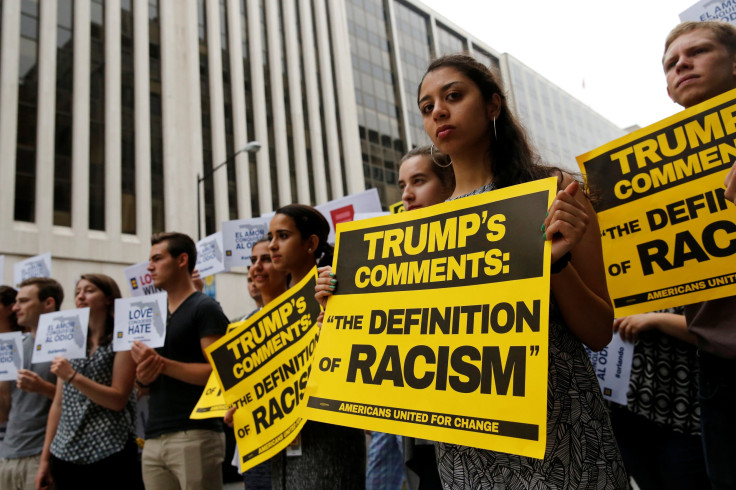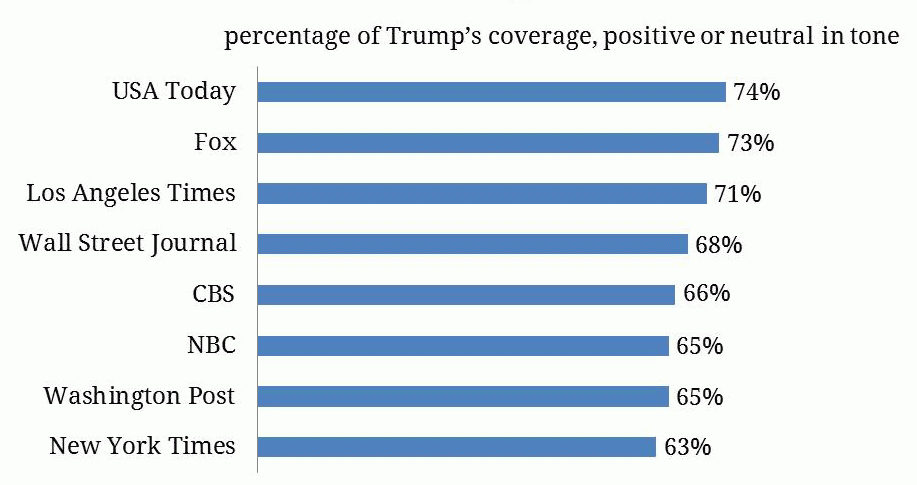How Neutral Media Coverage Of Donald Trump Fueled A ‘View From Nowhere’ Horse Race

Donald Trump has one thing in common with the "scum" media he distrusts so much: Both the GOP candidate and the reporters covering him will tell you the press has been critical of Trump from the moment he launched his campaign last June. For Trump, that narrative is proof that he has been winning an uphill battle against an aggressive and biased media, while journalists cling to it as a rejoinder to critics who say they enabled Trump's rise.
But a study released Tuesday by Harvard University's Shorenstein Center suggested both parties are mistaken. The report, titled "Pre-Primary News Coverage of the 2016 Presidential Race," has been widely covered as proof that the media, chasing ratings and clicks, helped "create" the phenomenon that is Donald Trump. But the media's inability to move beyond "objective" news coverage, as International Business Times reported last week, may have been just as important to Trump's rise as the sheer amount of airtime he received.
The report looked at the first eight months of the primary season, referred to as the "invisible primary," in which Trump received far more free media exposure than any other candidate. "By our estimate, Trump’s coverage in the eight news outlets in our study was worth roughly $55 million," the study said. "Trump reaped $16 million in ad-equivalent space in The New York Times alone, which was more than he spent on actual ad buys in all media during all of 2015."
Journalists themselves regurgitated the study's conclusions. "This Harvard Study Is a Powerful Indictment of the Media's Role in Trump's Rise," wrote the Washington Post's Chris Cillizza. "The Media’s Donald Trump Obsession Helped Propel His Candidacy," echoed the Huffington Post. "Journalists helped cement Donald Trump’s candidacy," said Poynter. "Media Coverage of the Primaries Was Awful, Harvard Study Confirms," said U.S. Uncut.
What has received less attention than the sheer volume of Trump's exposure is the fact that the mainstream media, far from being overly critical, opinionated or brutal toward Trump, bent over backward to be neutral. IBT reported last week on the problems Trump has caused for outlets and journalists looking to uphold a "traditional" approach of objective and neutral coverage of news.
Harvard's study suggests that the "view from nowhere" — a term that refers to attempts by journalists to remain neutral and unbiased — defined the mainstream media's attitude toward Trump in the months leading up to his electoral triumph.
"Across all the outlets, Trump’s coverage was roughly two-to-one favorable," the study said. The New York Times gave Trump 63 percent "positive or neutral" coverage. That was the lowest of the lot. Outlets like USA Today and Fox News clocked upwards of 73 percent.

The study noted that the neutral or positive Trump coverage was a result of the media emphasis on the apolitical aspect of the presidential race itself, focusing only how candidates were performing rather than the substance of their politics.
"Why did the watchdog press say so many positive things about Trump’s candidacy? The reason inheres in journalists’ tendency to build their narratives around the candidates’ positions in the race. This horserace focus leads them into four storylines: a candidate is 'leading,' 'trailing,' 'gaining ground,' or 'losing ground,' " the study said.
Eighty-two percent of Trump coverage focused on polls, events and "other," the study said. Only 12 percent focused on his ideology.
© Copyright IBTimes 2024. All rights reserved.












